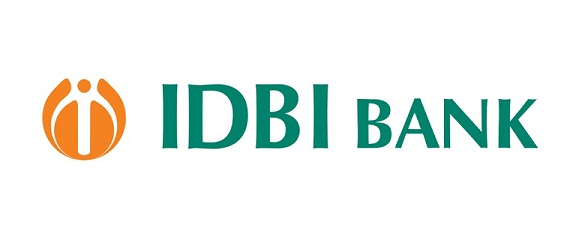The Prime Minister Narendra Modi launched the gold monetisation scheme as well as sovereign gold bonds, yesterday. The scheme and the bonds try to address India’s obsession with gold and the macroeconomic fall out of that obsession.
While nobody really knows how much gold is owned by Indian households, various estimates keep popping up. The estimates that I have seen in the recent past put India’s household gold hoard at 20,000-22,000 tonnes (Don’t ask me how these estimates are arrived at. I have no idea).
In this column I will just concentrate on the gold monetisation scheme and leave the analysis of the sovereign gold bonds for Monday’s column (November 9, 2015). I will also discuss the macroeconmic fall out of India’s obsession with gold on Monday.
The idea behind the gold monetisation scheme is to put India’s idle gold hoard to some use. Under this scheme, you can deposit gold with the bank and earn an interest on it. The Reserve Bank of India (RBI) issued a notification on November 3, 2015, which said that the banks would pay an interest of 2.25% if the gold is deposited for the medium term and 2.5%, if the gold is deposited for the long term. The medium term is a period of five to seven years whereas the long term is a period of 12 to 15 years. (For those interested in knowing the entire process of how to go about it, can click here).
Also, as the RBI notification issued on October 22, 2015, points out: “The designated banks will accept gold deposits under the Short Term (1-3 years) Bank Deposit (STBD) as well as Medium (5-7 years) and Long (12-15 years) Term Government Deposit Schemes. While the former will be accepted by banks on their own account, the latter will be on behalf of Government of India.”
What this means is that individual banks are free to decide on the interest that they will offer on the gold they collect in the short-term for a period of one to three years.
So, the question is will this scheme succeed in getting India’s hoard of gold out from homes and into the banks? The first thing we need to look at is the existing gold deposit scheme which was launched in 1999. The RBI notification issued in October 1999 states that “individual banks will be free to fix the interest rates in tune with their costing considerations. Interest will be payable in cash at fixed intervals or at maturity as decided by the bank.”
Under this scheme the State Bank of India allowed people to deposit gold for three, four or five years. The interest paid on gold was 0.75% for three years and 1% for four and five years, respectively. The minimum deposit had to be 500 hundred grams of gold.
The scheme did not manage to collect much gold. An article in The Financial Express points out: “The existing scheme, introduced 16 years ago, mobilised only 15 tonnes of gold—as the minimum deposit was 500 grams and the interest rate was a mere 0.75% for a three-year deposit.” There was no upper limit to the amount of gold that could be deposited.
As I pointed out earlier in this column, estimates suggest that India has around 20,000 tonnes of gold. When compared to that fifteen tonnes is not even a drop in the ocean.
Further, October 22, 2015 RBI notification on the new gold monetisation scheme clearly states that: “The minimum deposit at any one time shall be raw gold (bars, coins, jewellery excluding stones and other metals) equivalent to 30 grams of gold of 995 fineness. There is no maximum limit for deposit under the scheme.”
So the minimum amount of gold that can be deposited under the new scheme is just 30 grams in comparison to the earlier 500 grams. Over and above this, the gold can be deposited up to a period of 15 years in comparison to the earlier five. Further, the rate of interest on offer is either 2.25% or 2.5%, which is higher than the earlier 0.75-1%.
On all these counts the new gold monetisation scheme is a significant improvement on the gold deposit scheme. Given this, will gold move from Indian homes to banks (and indirectly to the government, given that banks are running a major part of the scheme on behalf of the government)?
Before answering this, it is worth asking here, why do Indians buy gold? It is a part of our tradition and culture is the simple answer. What does that basically mean? It means we buy gold because our ancestors used to buy gold as well. We also buy gold because it is easy to sell during times of emergency. We are emotionally attached to the gold we buy and like seeing it in the physical form. This makes it highly unlikely that the gold monetisation scheme will be a smashing success.
Any more reasons? Gold is a very easy way to hide black money (essentially money which has been earned and on which tax has not been paid). A lot of black money can be stored by buying just a few bars of gold. People who have invested their black money in gold are not going to come forward with it and deposit it in banks. That is really a no-brainer.
Further, the customer agreeing to deposit the gold the bank will “have to fill-up a Bank/KYC form and give his consent for melting the gold.” The gold will be melted in order to test its purity. Also, the “the gold ornament will then be cleaned of its dirt, studs, meena etc.”
The question is how many women would like to see their gold jewellery melted so that they can earn a return of a little more than 2% per year on it? I don’t think I need to answer that question.
These reasons best explain why the gold deposit scheme launched in 1999 has been a huge failure. And they also explain why the current gold monetisation scheme is unlikely to lead to any major shift of gold from homes to the government.
This brings me to the question whether you should be depositing your gold with the banks (and essentially the government)? One reason why people buy gold is because they believe that it acts as a hedge against inflation. The evidence on whether gold acts as a hedge against inflation is not so straightforward.
As John Plender writes in Capitalism—Money, Morals and Markets: “In real terms, the price of gold in 2012 was similar to the prevailing price in 1265.” So doesn’t that mean that gold has acted as a store of value over the last 1000 years? Not really. As Plender writes: “Over much of that time, though, the yellow metal failed to live up to its reputation as a solid store of value.”
Why does Plender say that? Dylan Grice, who used to work for Societe Generale explains this. As Grice writes: “A fifteenth-century gold bug who’d stored all his wealth in bullion, bequeathed it to his children and required them to do the same would be more than a little miffed when gazing down from his celestial place of rest to see the real wealth of his lineage decline by nearly 90 per cent over the next 500 years.”
In fact, even those who had bought gold at the peak of the 1971-1981 bull market in gold would have lost around 80% of their investment in real terms, over the next two decades.
Nevertheless, if you believe that gold acts as a hedge against inflation, should you hand over your gold to the government? Inflation more often than not is due to the “easy money” policies run by the government. This could mean inflation created through money printing or keeping interest rates too low for too long.
When gold and silver were money, the governments destroyed money by debasing it, i.e., lowering the content of precious metals in the coins they issued.
When paper money replaced precious metals as money, the governments destroyed it by simply printing more and more of it. Now they create money digitally.
So the last thing you should do is hand over gold to the government. The reason you are holding gold is because you don’t trust the government to do a good job of managing the value of money. And given that, it’s best that the hedge (i.e. gold) be with you. If that means losing out on interest of 2.25-2.5% per year, then so be it.
Postscript: On Monday (Nov 9, 2015) I will be analysing the sovereign gold bonds which have been launched as well. Look out for that.
The column originally appeared on The Daily Reckoning on Nov 6, 2015





